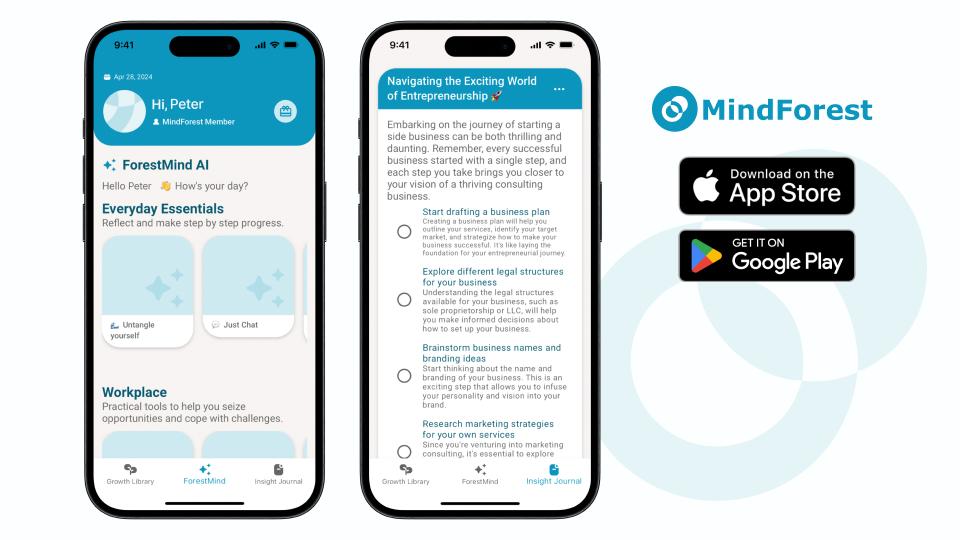
Ghosting and Avoidant Behaviour: Why We Pull Away and 3 Ways to Heal from It
Have you ever experienced ghosting? The two of you were chatting happily the night before, and the next day the person suddenly disappears, never replying again?
Learning to say no and set boundaries is essential in your professional life. How do we say no without feeling guilty or awkward in our professional relationships? It is time to learn about some psychology-backed tips to navigate these workplace dynamics.

Have you ever been cornered in a professional setting where your colleagues or clients keep asking you for favours, and you just can't seem to say no? You find yourself agreeing to every request, and before long, they expect your constant assistance. Suddenly, you're overwhelmed with an ever-growing to-do list. Learning to say no and set boundaries is essential in your professional life. How do we say no without feeling guilty or awkward in our professional relationships? It is time to learn about some psychology-backed tips to navigate these workplace dynamics.
Tip 1: Calm Tone
First off, when you want to say no, the tone of your voice is important. Often, when we say no to someone, while we are indeed rejecting their request, it is beneficial to monitor our tone (Voss & Raz, 2017). Are we declining with hostility and defensiveness, or are we doing so with understanding and a genuine desire to help? The difference between these two approaches can be substantial.
For instance, lf you say: 'I would rather not, I do not want to do it. Stop bothering me, will you?' You can see that this tone is likely to make the other person feel shut out, and it does not convey any attempt to understand their situation.
Undoubtedly, this way of saying no can be harder for you because you know the other person might not take it well, and it is not conducive to building a lasting relationship.
Tip 2: Low Pace of Speech
We can moderate our pace of speech, as the speed at which we talk greatly influences how our message is understood. Generally, a slower and calmer tone is less likely to trigger a defensive reaction in the listener when we say no and set boundaries with them (Voss & Raz, 2017).
Tip 3: Show Empathy
We can talk slowly to convey that we genuinely care about the other person's issue (Voss & Raz, 2017) when we want to say no politely. Take this example: "I am sorry, but I might be unable to assist this matter. Could you explain the situation a bit more?" Often, posing a question like this can help move the conversation forward because it signals to the other person that, although there may be practical limitations on this occasion and you might not be able to help, you are nonetheless interested in the problem they are facing. You are willing to try to understand it better. Essentially, it is about saying no with a tone of empathy. Even if we must say no and set boundaries, we can still express an interest in their problem and explore possible ways to address it.
When we say no to someone, our mindset is crucial. You will notice that when we help others, it is easy to end up in a situation where they want more and more. You agree to a small request, and then they push further, testing your limits. This is quite common and even identified in psychology as a persuasion technique called “foot-in-the-door” (Pascual., Guéguen, Pujos, & Felonneau, 2013). It means that once we have agreed to a small request, we are more likely to agree to a bigger one because we do not want to change our attitude towards the person. This makes it very difficult to say no or set boundaries.
How can we say no to situations where people keep asking for more? One practical way is to set boundaries. To implement this, you should think about how far you are willing to go with someone's request, particularly when it starts to use up your important resources. Ask yourself how much time you are willing to dedicate to the matter.
Once you have set boundaries, you can inform the other person when it is time to stop. These boundaries act as a reference point for yourself to avoid burnout. For example, friends who work in psychology often have people coming to them with their problems, sometimes without end. A helpful approach for both parties is to set a clear time limit, like one or two hours for a conversation. This sends a signal to the person that you are fully available for that hour, but it is also their responsibility to plan how to use that time effectively. That is why professional counselling services set boundaries with time limits for sessions.
Often, our reluctance to say no or set boundaries is not necessarily because we cannot fulfil the request, but because we want to maintain a certain personal image and feel valued. Everyone has a desire to feel needed. For instance, if you naturally find it difficult to say no, it might be worth examining where the issue lies. Do you lack the skills to refuse politely, finding it awkward each time, or is your sense of self-worth solely derived from helping others, giving you a feeling of recognition?
If that is the case that makes it difficult to say no, it might be a problem that needs addressing. You should establish your self-worth value through other areas, such as developing skills, engaging in more equal relationships, or even meaningful social contributions like environmental protection or community service. Building your self-worth should not just be about becoming a people-pleaser or 'tool' for others.
MindForest is your tailor-made, psychology-powered AI coach, crafted to support you in learning to say no and set boundaries in your professional life. Discover the key features of MindForest that can empower you to maintain your wellbeing at work:
1) Interactive Psychology Courses for Self-care: MindForest offers interactive courses grounded in psychology, teaching you to develop resilience to set boundaries in the workplace. You will learn to navigate requests and demands effectively to say no and safeguard your professional well-being.
2) Compassionate AI Coaching for Assertiveness: Engage with your AI coach about the challenges of your workplace dynamics. It provides a safe space and evidence-based advice to help you assert your limits and handle workplace pressures. Your AI coach will be your partner in reinforcing your ability to say no in professional settings.
3) Reflective Insight Journaling for Empowerment: By reflecting on your dialogues with the AI coach, MindForest crafts personalised insight journals. These journals chart your growth and enhance your capacity to set boundaries for healthy professional relationships.

Download MindForest today and embark on a transformative journey to becoming more self-assured and in control of your work life.
Today, we've explored some valuable strategies for the workplace on how to say no and set boundaries. Embrace this gradual journey. While psychology offers tools to enhance your ability to say no, it's even more important to solidify your professional identity and self-worth. Typically, colleagues and clients who hold you in high regard will also respect your time, understanding that it is a precious resource with multiple demands. This also helps you protect yourself from people who might have dark triad personality. This is a personal assignment for all of us in our professional lives—to learn to say no and set boundaries. It's a skill we must nurture for our career development and mental well-being.
Pascual, A., Guéguen, N., Pujos, S., & Felonneau, M. L. (2013). Foot-in-the-door and problematic requests: A field experiment. Social Influence, 8(1), 46–53. https://doi.org/10.1080/15534510.2012.696038
Voss, C., & Raz, T. (2017). Never split the difference. Random House Business Books.
Discover practical psychology tips you can apply to your everyday life. From building resilience to improving relationships and finding work-life balance, our blog brings expert-backed insights that help you grow.

Have you ever experienced ghosting? The two of you were chatting happily the night before, and the next day the person suddenly disappears, never replying again?

This article breaks down the psychology of nonchalance, signs of a nonchalant dater, the debate nonchalant vs chalant, and what truly matters when forming modern relationships.

Have you ever felt so intensely drawn to someone that you couldn’t stop thinking about them—imagining every possible interaction, decoding every message, overanalysing every glance? If so, you may not be experiencing love, but something more specific: limerence.
Download MindForest and turn these insights into action. Get personalized support from ForestMind AI Coach, track your progress, and unlock your full potential.